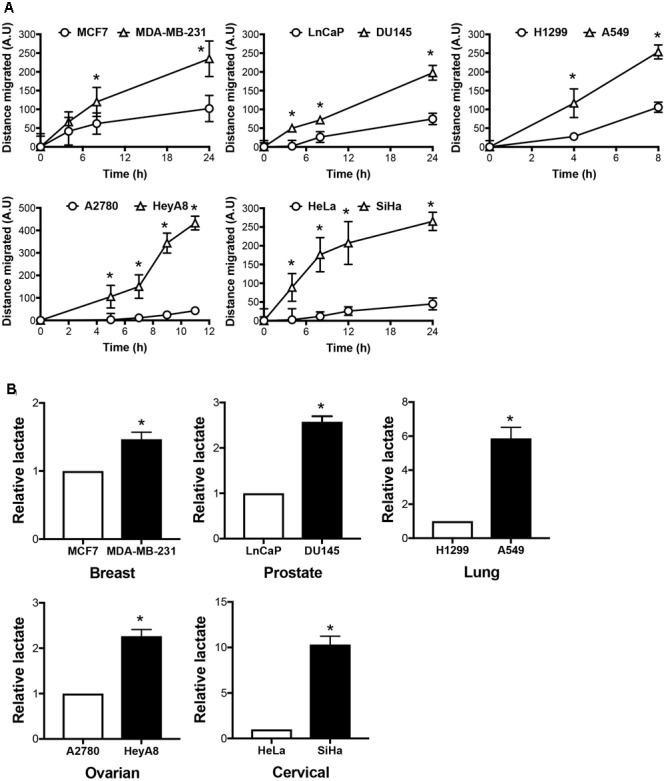FIGURE 1.

Invasive cancers produce more lactate than its less aggressive counterparts. (A) Migration rate of cancer cell pairs originate from breast (MCF7, MDA-MB-231), prostate (LnCaP, DU145), lung (H1299, A549), ovary (A2780, HeyA8), and cervix (HeLa, SiHa), were assessed by gap closure assay. Cells were seeded into culture insets with a gap in between. Cell migration to cover the gap was monitored over time. Distance covered by the cells was measured and calculated using Image-Pro Analyzer software. All results show mean ± standard deviation (SD), n = 3. ∗ Denotes statistically significant difference in distance of migration between the cancer cell line pair, P < 0.05. (B) Intracellular lactate of the five cancer cell pairs was measured using lactate dehydrogenase enzymatic assay and presented relative to the less invasive counterparts. All results show mean ± SD, mean, n = 3. ∗P < 0.05.
